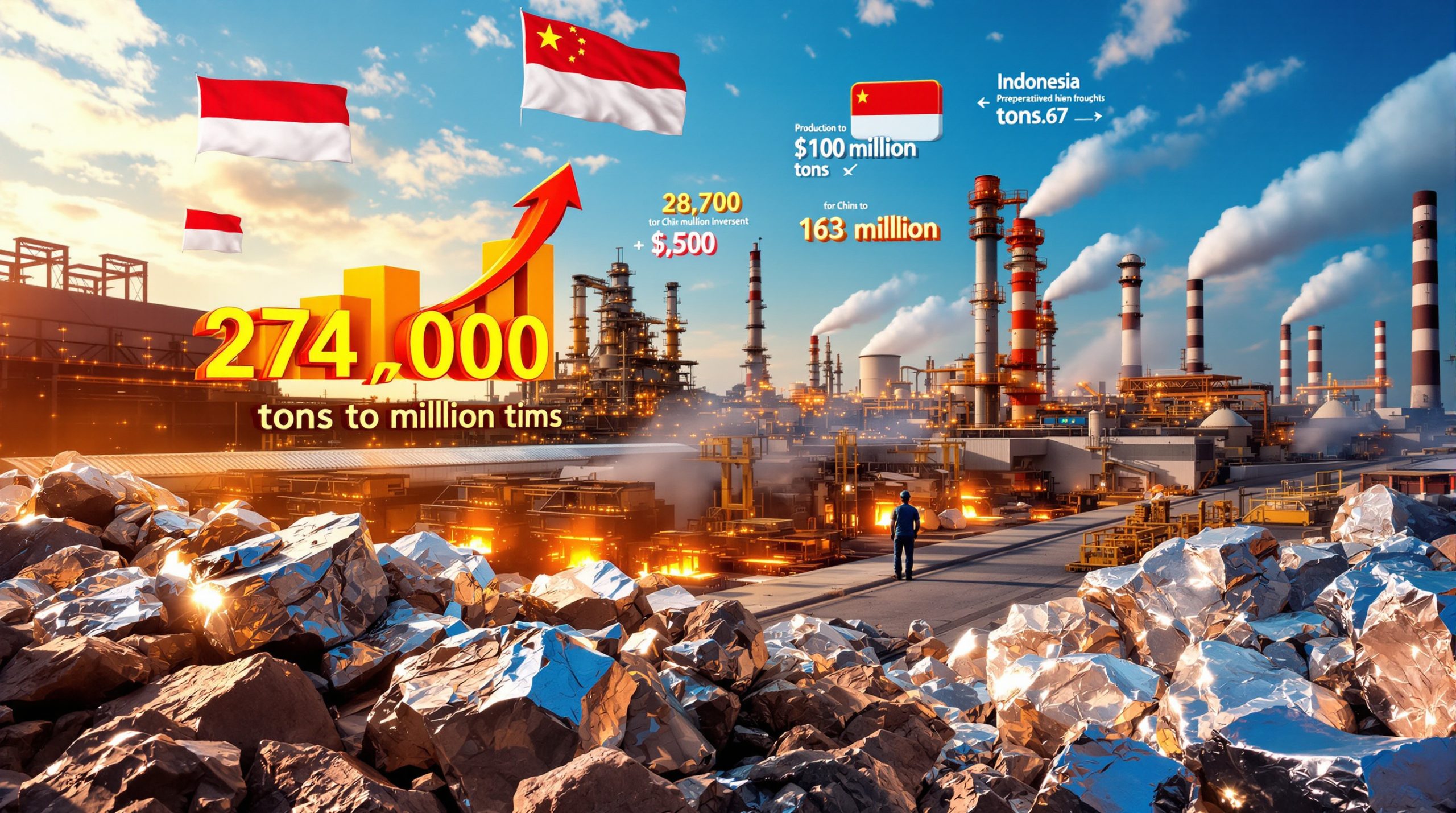How Are Macroeconomic Factors Influencing Precious Metals Markets?
Global economic uncertainty has become a primary driver of precious metals prices, creating a complex investment landscape with multiple catalysts. The interplay of trade tensions, debt concerns, and central bank strategies is reshaping how investors approach gold and silver allocations.
Trade Tensions and Policy Uncertainty
The precious metals market is experiencing significant disruption due to ongoing trade disputes and tariff policies. This uncertainty has created a paralysis effect throughout the supply chain, with industry participants hesitant to make investment decisions or efficiently move inventory.
"Bonded warehouses are filling up as traders park metal and wait for tariff clarity," notes Edward Mayer, a metals market analyst. This stockpiling phenomenon reflects the broader market's inability to price risk effectively amid shifting policy landscapes.
The impact extends beyond simple price movements, affecting everything from mining investment decisions to refining operations and end-user purchasing patterns. With each announcement of potential trade restrictions, the metals markets experience volatility spikes that complicate long-term planning.
Debt Concerns and Bond Market Nervousness
Perhaps the most significant macroeconomic factor supporting precious metals is the unprecedented global debt situation. Financial experts highlight a sobering projection: the accumulated debt of the past 230 years could potentially double over just the next decade.
This accelerating debt trajectory has created what many describe as a "parabolic phase" of debt accumulation, triggering nervousness throughout bond markets. As governments continue unprecedented borrowing, investors increasingly question long-term fiscal sustainability.
Gold and silver traditionally serve as inflation hedge benefits, gaining appeal as sovereign debt concerns mount. This relationship has strengthened as more investors recognize the potential systemic risks posed by unsustainable debt levels.
Central Bank Diversification Strategies
A fundamental shift in central bank reserve management represents one of the most powerful forces in precious metals markets. Central banks worldwide are systematically diversifying away from US dollar holdings and into gold at an accelerating pace.
"This isn't a short-term trend but a multi-generational secular change," explains Was Latif, portfolio manager at a major investment firm. "Recent data from China confirms this ongoing strategic shift, and the rate of central bank gold purchases shows no signs of slowing."
This structural buying creates a reliable price floor and represents a profound vote of no confidence in the long-term stability of fiat currencies. Unlike previous cycles, central bank buying appears insensitive to short-term price movements, suggesting deep strategic motivations rather than tactical positioning.
What's Driving Gold's Sustained Price Performance?
Despite traditional headwinds like rising interest rates, gold has maintained impressive price strength, suggesting fundamental changes in market dynamics. Several key factors explain this resilience and point to potential future performance.
Breaking Traditional Correlations
One of the most significant developments in gold markets is the breakdown of historical relationships between gold prices and US real interest rates. Typically, rising real rates create headwinds for gold, which pays no yield. However, this relationship has weakened considerably.
"The decoupling of gold from real rates signals that structural buyers, particularly central banks, are now driving the market," explains Was Latif. This fundamental change means gold is less sensitive to traditional price determinants like inflation expectations or interest rate movements.
Market technicians note that this correlation breakdown often precedes major price movements, as it reflects a shift in the underlying market structure and participant behavior. The persistence of this decoupling suggests structural rather than temporary changes.
Supply Constraints Supporting Prices
The gold mining sector faces significant production challenges after years of underinvestment in exploration and development. Industry capital allocation has prioritized dividends and debt reduction over finding new deposits, creating a looming supply gap.
"Limited capital flowing into drilling activities is creating a fundamental supply restriction that could persist for several years," notes Kell Van Alfen, a mining sector specialist. "The timeline to bring new mines online means this constraint can't be quickly resolved, even with higher prices."
Gold's production profile differs from many commodities, with limited ability to rapidly increase output in response to higher prices. New discoveries have declined substantially, with major mining companies struggling to replace depleted reserves despite increased exploration budgets.
Investor Sentiment and Capital Allocation
While gold prices analysis shows strong performance, investor participation remains relatively muted, suggesting potential for further upside as broader investor groups enter the market. Generalist investors remain underweight in the gold sector despite improving fundamentals.
"We're seeing early signs of changing sentiment as senior producers generate significant free cash flow," explains Kell Van Alfen. "However, many investors remain cautious due to the sector's historical challenges with capital allocation and project execution."
This cautious approach creates a potential catalyst for future price appreciation as skeptical investors gradually increase exposure. Unlike previous gold bull markets characterized by speculative excess, the current cycle shows more disciplined capital flows and rational market behavior.
How Is the Silver Market Evolving?
Silver has emerged from gold's shadow, reaching 13-year highs after years of underperformance. This price resurgence reflects fundamental changes in both supply and demand dynamics that may signal a sustained bull market.
Supply-Demand Imbalance Creating Opportunities
Silver's market fundamentals have dramatically improved, with the market experiencing its fifth consecutive year of supply deficit. This persistent imbalance has depleted approximately 700 million ounces of above-ground inventory, creating increasingly tight supply conditions.
"The market has finally recognized this fundamental imbalance after years of undervaluation," notes Edward Mayer. "Silver's smaller market size compared to gold means these deficits can eventually create powerful price movements once inventory buffers are depleted."
Unlike many commodities, silver's above-ground inventory has been steadily decreasing rather than building, creating conditions for potential supply squeezes. This contrasts with previous decades when substantial stockpiles dampened price volatility.
Dual Demand Drivers
Silver benefits from a unique position with approximately 50% of demand coming from industrial applications and 50% from investment demand. This dual nature provides multiple catalysts for price appreciation across different economic scenarios.
During economic expansion, industrial demand supports prices, while in uncertain times, investment demand typically increases as investors seek safe havens. This balanced demand profile means silver can potentially outperform in multiple economic environments.
The industrial side remains robust despite economic uncertainties, with manufacturers prioritizing silver procurement despite higher prices due to its irreplaceable properties in many applications. Meanwhile, investment demand has strengthened as inflation concerns persist and financial uncertainty grows.
Geographic Supply Concentration Risks
The silver supply chain faces significant concentration risks, with approximately 25% of global production coming from a single country—Mexico. This geographic concentration creates vulnerability to political, regulatory, or operational disruptions.
"Mexico, the world's largest primary silver producer, has reportedly not permitted a new mine since 2019," explains Steven Bows, mining analyst. "This permitting paralysis creates a structural supply constraint that cannot be quickly resolved."
Beyond Mexico, other major producing regions face similar challenges with permitting delays, environmental restrictions, and investment hesitancy. These constraints limit new supply even as prices rise, potentially extending and amplifying the current bull market.
What Are Silver's Industrial Growth Catalysts?
Silver's industrial applications continue expanding, creating new demand sources that could fundamentally alter long-term supply-demand dynamics. Beyond traditional uses, emerging technologies are increasingly dependent on silver's unique properties.
Technological Applications Expanding
Silver's industrial demand extends far beyond conventional electronics, with growing applications across advanced technology sectors. Space technology, robotics, and defense applications are emerging as significant growth areas with relatively price-insensitive demand.
"Defense applications alone represent substantial silver consumption, with critical components in military hardware requiring silver's unique electrical and thermal properties," explains Edward Mayer. These specialized applications often have lower price sensitivity, providing resilient demand even during price increases.
The aerospace sector's growth creates additional demand as satellite deployments accelerate and space exploration missions increase. Silver's reliability under extreme conditions makes it irreplaceable in these high-stakes applications where performance outweighs cost considerations.
Renewable Energy Demand
Despite cost pressures in the solar panel industry, silver remains essential for photovoltaic applications. Manufacturers have reduced silver content per panel but overall consumption continues rising due to growing installation volumes.
"Contrary to expectations of declining demand from China's solar sector, project announcements remain significant," notes Steven Bows. "The global push toward renewable energy creates a persistent demand floor regardless of short-term economic conditions."
Ongoing innovation in photovoltaic technology aims to reduce silver intensity, but complete substitution remains technically challenging. Even with thrifting efforts, the sheer volume growth in solar installations ensures continued robust demand for silver.
Potential Technological Breakthroughs
Emerging technologies like solid-state batteries for electric vehicles could significantly increase silver demand compared to current lithium-ion designs. These potential technological shifts represent substantial growth catalysts beyond current market projections.
Solid-state battery technology, still in development stages, may require significantly more silver per vehicle than current designs. As automotive manufacturers invest heavily in this next-generation technology, silver could benefit from an entirely new demand source.
Medical applications also continue expanding, with silver's antimicrobial properties finding new uses in healthcare settings. From advanced wound dressings to medical device coatings, these applications add another layer of diversified demand unrelated to economic cycles.
How Should Investors Approach Precious Metals Allocation?
The complex dynamics of the precious metals analysis market require strategic allocation approaches. Investors can optimize exposure through diversification across multiple dimensions while balancing risk and potential returns.
Portfolio Diversification Strategies
Precious metals offer multiple axes of diversification within a portfolio. Investors can spread exposure across commodity types (gold, silver, platinum group metals), life cycle stages (exploration, development, production), company size (large, mid-tier, and junior producers), and geographic regions.
"This multi-dimensional approach allows investors to maintain core exposure to precious metals while managing specific risk factors," explains Kell Van Alfen. "Different segments of the market respond differently to various economic conditions."
For example, during market uncertainty, senior producers typically outperform juniors, while in established bull markets, development-stage companies often deliver superior returns. Geographic diversification mitigates country-specific regulatory or political risks.
Balancing Risk and Liquidity
The mining sector presents varying risk-return profiles based on company stage and size. While producers offer greater liquidity and lower risk, development and exploration companies provide higher potential returns with corresponding volatility.
A balanced approach across the spectrum allows investors to manage risk while maintaining exposure to higher-growth opportunities. Many professional investors allocate a majority to established producers while maintaining smaller positions in development companies with near-term production potential.
Liquidity considerations become particularly important during market stress periods. Senior producers typically maintain trading volume during downturns, while junior companies may experience significant liquidity reductions, potentially trapping investors during volatile periods.
Allocation Shifts in Institutional Portfolios
Traditional institutional allocations to gold have historically ranged from 2-5% of portfolios. However, changing macroeconomic conditions are causing a reevaluation of these conventional wisdom limits.
"Some money managers are now increasing this allocation to 10% or higher in response to the current macroeconomic outlook," notes Edward Mayer. "This represents growing institutional acceptance of precious metals as a strategic asset class rather than a tactical position."
This shift in allocation models could create substantial additional demand if widely adopted. Even small percentage increases in allocation from pension funds, sovereign wealth funds, and other large institutional investors would translate to significant capital flows into a relatively small market.
What Price Targets Are Realistic for Gold and Silver?
While precise price predictions remain challenging, historical cycles and current fundamentals provide context for potential future performance. Multiple factors suggest room for substantial appreciation beyond current levels.
Historical Cycle Comparisons
Previous gold bull markets have delivered substantial returns over multi-year periods. During the 1970s, gold rose from $35 to approximately $200 (a 5.7x increase), while the 2000-2012 cycle saw gold rise from $200 to $1,800 (a 9x increase).
"The current cycle may combine elements of both previous bull markets," suggests Kell Van Alfen. "We're seeing inflation concerns similar to the 1970s alongside growing emerging market and central bank demand reminiscent of the 2000-2012 period."
These historical patterns suggest potential for multi-year price appreciation rather than short-term spikes. Unlike previous cycles, the current environment features both monetary uncertainty and structural supply challenges, potentially creating more persistent price support.
Near-Term Price Projections
Market experts offer varying projections for precious metals prices, though most see substantial upside from current levels. Gold and silver market analysis indicates continued strength, with silver potentially outperforming due to its smaller market size and industrial leverage.
"Gold could reach $4,000 per ounce in the current cycle, with potential for significantly higher prices depending on macroeconomic developments," notes Kell Van Alfen. For silver, experts suggest the metal could potentially revisit or exceed its previous all-time high of $50 per ounce.
These projections consider both monetary and industrial demand factors, with particular emphasis on structural supply constraints. The combination of central bank buying, investment demand, and limited supply response creates conditions for sustained price appreciation.
Factors That Could Limit Price Appreciation
Despite bullish fundamentals, several factors could potentially limit the current precious metals bull market. These include central banks reversing their buying trend, significant economic improvement reducing macro risk perceptions, and technological innovations reducing metal intensity in key applications.
For silver specifically, price-induced substitution in industrial applications could eventually create demand destruction if prices rise too quickly. Manufacturers have historically sought alternatives when silver prices rise substantially, though complete substitution remains challenging in many applications.
Investor sentiment shifts represent another potential limiting factor. If interest rates stabilize at higher levels while offering positive real returns, the opportunity cost of holding non-yielding assets increases, potentially reducing investment demand.
How Does Bitcoin Compare to Gold as a Store of Value?
The emergence of Bitcoin has created debates about its role relative to traditional precious metals. While similarities exist, significant differences in history, volatility, and use cases suggest different roles in investment portfolios.
Evolving Investor Demographics
Bitcoin is gaining traction among younger, digitally-native investors who view it as a modern equivalent to gold. This demographic shift represents a potential long-term change in how wealth preservation assets are perceived and utilized.
"Bitcoin is essentially digital gold for younger investors who grew up in a digital world," explains Was Latif. "While this demographic currently represents a relatively small portion of investment capital, their influence is growing and could impact traditional precious metals allocation over time."
The generational divide in attitudes toward physical versus digital assets may eventually influence broader market dynamics as wealth transfers to younger generations. However, this transition remains gradual rather than immediate.
Volatility Considerations
Bitcoin exhibits significantly higher volatility than gold, limiting its effectiveness as a portfolio stabilizer. While gold typically dampens overall portfolio volatility with its traditional 2-5% allocation, Bitcoin currently tends to correlate more closely with technology stocks and risk assets.
This volatility difference reflects Bitcoin's relative market immaturity and smaller capitalization compared to the global gold market. As Bitcoin markets develop and institutional participation increases, some experts suggest volatility may gradually decrease, though likely remaining higher than gold.
Risk-adjusted return metrics currently favor gold for conservative portfolios seeking stability, while Bitcoin may suit investors with higher risk tolerance and longer time horizons. The optimal approach for many investors may include both assets in appropriate proportions.
Long-Term Coexistence Potential
Market experts suggest that while Bitcoin may continue growing as a digital store of value, gold's multi-thousand-year history and established role in the global financial system give it staying power. The two assets may serve complementary rather than competing roles.
"Governments' tendency to maintain control over currency systems may limit Bitcoin's potential to fully replace traditional monetary metals," notes Edward Mayer. This regulatory consideration creates different risk profiles for the two assets, potentially justifying allocation to both.
The physical nature of gold provides certain advantages during extreme scenarios like power outages or internet disruptions, while Bitcoin offers benefits in terms of transferability and divisibility. These differing characteristics suggest potential complementary roles rather than direct substitution.
What Are the Investment Implications for Mining Companies?
Mining companies offer leveraged exposure to precious metals prices, with potential for significant outperformance during bull markets. Understanding the sector's dynamics helps investors optimize returns while managing specific mining-related risks.
Margin Expansion Opportunities
Mining companies are experiencing substantial margin expansion as metal prices increase faster than production costs. This creates significant operating leverage, with gold equity indices outperforming the underlying metal prices.
"Gold equity indices have gained approximately 60% versus gold's 20% price increase over the past year," notes Kell Van Alfen. "This operating leverage effect typically accelerates as prices rise further above all-in sustaining costs."
The fixed-cost nature of mining operations means that price increases flow disproportionately to the bottom line once production costs are covered. This effect creates the potential for dramatic earnings growth even with modest additional price appreciation in the underlying metals.
M&A Activity Accelerating
Senior producers are beginning to accumulate substantial cash on their balance sheets, potentially signaling increased merger and acquisition activity. After years of disciplined capital allocation focused on debt reduction, major companies now seek growth opportunities.
"Recent acquisitions of development-stage assets like O3 Mining and the Windfall project demonstrate growing interest in securing future production pipelines," explains Steven Bows. This consolidation trend typically accelerates in the middle stages of bull markets as companies gain confidence in higher long-term gold price forecast levels.
For investors, identifying potential acquisition targets can provide significant returns beyond metal price appreciation. Companies with quality assets, clear development paths, and reasonable valuations often attract premium bids from major producers seeking to replenish reserves.
Junior Mining Investment Considerations
The junior mining sector offers higher risk
Ready to Spot the Next Major Mineral Discovery?
Stay ahead of the market with Discovery Alert's proprietary Discovery IQ model, delivering instant notifications on significant ASX mineral discoveries and turning complex data into actionable insights. Explore why historic discoveries generate substantial returns by visiting the Discovery Alert discoveries page and begin your 30-day free trial today.




